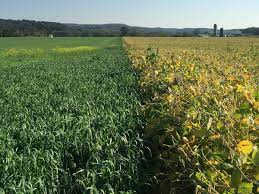
Breaking News
 HERE'S WHAT NO CASH ACTUALLY MEANS (Dave Ramsey re-post)
HERE'S WHAT NO CASH ACTUALLY MEANS (Dave Ramsey re-post)
 The Silver Shift: Why Stackers Are DUMPING 90% Silver & Buying SilverBitz!
The Silver Shift: Why Stackers Are DUMPING 90% Silver & Buying SilverBitz!
 Eye-bouncing - #SolutionsWatch
Eye-bouncing - #SolutionsWatch
 'Targeted, Antisemitism': 16 Dead, 38 Injured After Father & Son Terrorists Attack...
'Targeted, Antisemitism': 16 Dead, 38 Injured After Father & Son Terrorists Attack...
Top Tech News
 This tiny dev board is packed with features for ambitious makers
This tiny dev board is packed with features for ambitious makers
 Scientists Discover Gel to Regrow Tooth Enamel
Scientists Discover Gel to Regrow Tooth Enamel
 Vitamin C and Dandelion Root Killing Cancer Cells -- as Former CDC Director Calls for COVID-19...
Vitamin C and Dandelion Root Killing Cancer Cells -- as Former CDC Director Calls for COVID-19...
 Galactic Brain: US firm plans space-based data centers, power grid to challenge China
Galactic Brain: US firm plans space-based data centers, power grid to challenge China
 A microbial cleanup for glyphosate just earned a patent. Here's why that matters
A microbial cleanup for glyphosate just earned a patent. Here's why that matters
 Japan Breaks Internet Speed Record with 5 Million Times Faster Data Transfer
Japan Breaks Internet Speed Record with 5 Million Times Faster Data Transfer
 Advanced Propulsion Resources Part 1 of 2
Advanced Propulsion Resources Part 1 of 2
 PulsarFusion a forward-thinking UK aerospace company, is pushing the boundaries of space travel...
PulsarFusion a forward-thinking UK aerospace company, is pushing the boundaries of space travel...
 Dinky little laser box throws big-screen entertainment from inches away
Dinky little laser box throws big-screen entertainment from inches away
 'World's first' sodium-ion flashlight shines bright even at -40 ºF
'World's first' sodium-ion flashlight shines bright even at -40 ºF
Industrial Food Production Is Failing Us, Regenerative Farming Is the Solution

Our food and farming system is facing a reckoning — a global pandemic that upended supply chains and unearthed the horrific consequences of a consolidated meatpacking industry, climate change threatening food production across the country, fertilizer shortages, rising prices at the grocery store and a sector that accounts for 10% of U.S. greenhouse gas emissions.
Our current agricultural system is failing us. It's high time we build toward a stronger, healthier, more equitable and more resilient one.
The Natural Resources Defense Council (NRDC) report "Regenerative Agriculture: Farm Policy for the 21st Century" details an alternative vision of what agriculture can be — one that can respond better to external shocks (such as a pandemic), combat climate change by embracing Indigenous growing principles, protect biodiversity by managing farms and ranches as ecosystems, and support competition while putting decision-making power back into the hands of independent farmers and ranchers.
NRDC interviewed more than 100 farmers and ranchers from 47 states and Washington, D.C., to learn more about regenerative agriculture and the barriers to and opportunities for practicing it on more acres.
The team used qualitative analysis software to analyze interviews for themes and developed policy solutions to address the themes that emerged. Overwhelmingly, interviewees shared the ways federal agricultural policy disproportionately serves industrial agriculture over regenerative agriculture.



